Closeup of a red ant covered in pollen. Learn more about ants here. Image via Egor Kamelev/ Pexels.
Ants are common insects, but they have some unique capabilities. For example, they have legendary communication skills that allow their colonies to function as superorganisms.
We are newbies in the animal kingdom, but ants have been living since the Cretaceous, arising some 140 to 168 million years ago. Individually, ants are the longest-lived insects. Unlike some bugs that might only live for days or even hours, the queen ant of one particular species – the Pogonomyrmex Owyheei – can live up to 30 years.
There are 20 quadrillion ants on Earth. That’s 2.5 million ants for every human. Ants are members of the family Formicidae. There are more than 12,000 species, and some experts estimate 20,000 exist.
They can be found almost anywhere in the world, with the exception of Antarctica, Iceland, Greenland and some island nations.

Ants’ appearance
Ants range in size from minuscule up to 1 inch (3 cm) long. They are usually black, brown, red or yellow.
Ants don’t have ears, and some of them don’t have eyes! Ants “listen” by feeling vibrations from the ground through their feet, and eyeless ants such as the driver ant species can communicate by using their antennae.
Ants have elbowed antennae and narrow “waists” between the abdomen and thorax. Some ants have wings. Their front wings are longer than their hind wings. The presence of wings indicates an ant’s fertility. Ants with wings are either females that are fertile or males whose job it is to mate with them.
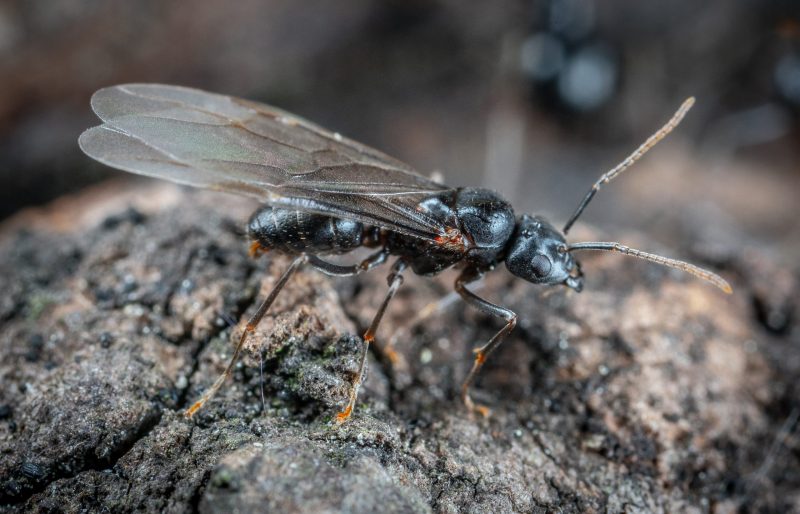
Members of the colony
In a colony, you can find females (workers or queens) and males. While females are diploid (hatched from fertilized eggs, hence possessing two sets of chromosomes, one from the mother and one from her male mate), males are haploid (hatched from unfertilized eggs, hence have just one set of chromosomes, from the mother). Thus, males do not have a father.
Queens are reproductive females that are fully winged in most species.
Workers are non-reproductive (sterile) females that are always wingless. They form the bulk of individuals within a colony.
Males are fully winged (mostly). They are generally present within a colony for only a short time each year and typically live a few weeks, dying very soon after mating.
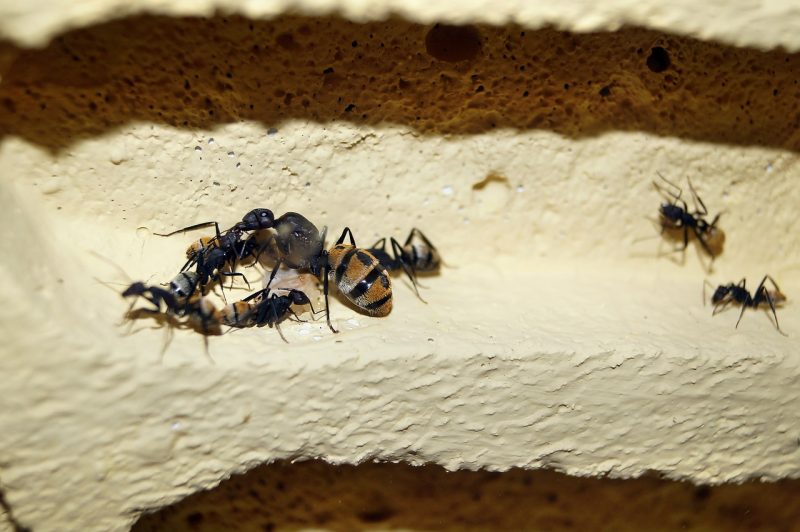
Typical cycle for a worker ant
Egg: Laid in the ant colony and looked after by other workers.
Larva: Once it emerges from the egg, the larva then begins to develop.
Adult: It can take around 6-10 weeks for an ant to reach the adult stage.
For the queen in any colony, their lifespan may last up to around 15 years, while the worker ants live for roughly seven years. This is, of course, if they can avoid predators and other dangers. For a reproductive male – one of the flying ant types – the lifespan is much shorter at around two weeks. This is because when they’re done mating, they die.
Most of the ants a person sees are female. Male ants, also called “drones,’ do not perform any work in the colony. Their only job is to fertilize the queen ant so she can lay eggs and support the population in the nest.
What are their characteristics?
The ant is one of the world’s strongest creatures in relation to its size. A single ant can carry 50 times its own body weight, and they’ll even work together to move bigger objects as a group!
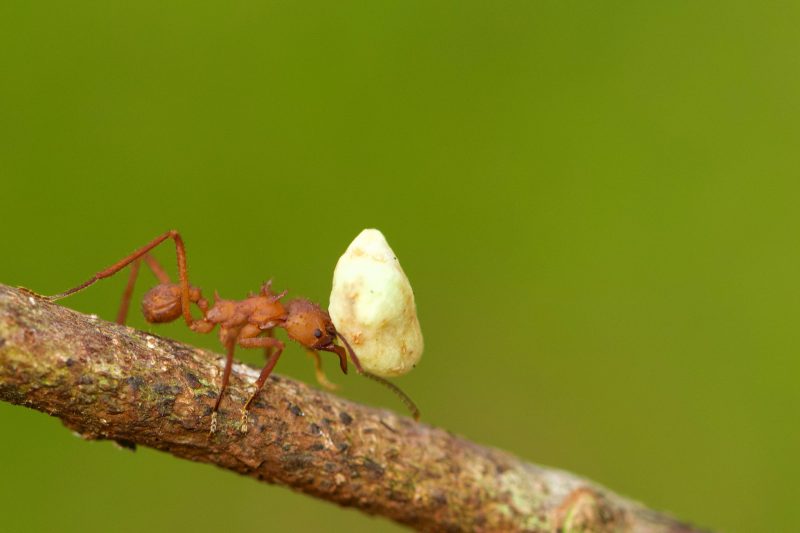
Ants hold the record for the fastest movement in the animal kingdom. A species of trap jaw ant can close its jaws at 140 mph (125 kph), which it uses to kill its prey or injure predators.
The largest ant nest ever found was more than 3,700 miles (6,000 km) wide. Found in Argentina in 2000, the enormous colony housed 33 ant populations that had merged into one giant supercolony, with millions of nests and billions of workers.
Ants’ behavior and diet
As social insects, ants live in structured nest communities that may be located underground, in ground-level mounds or in trees.
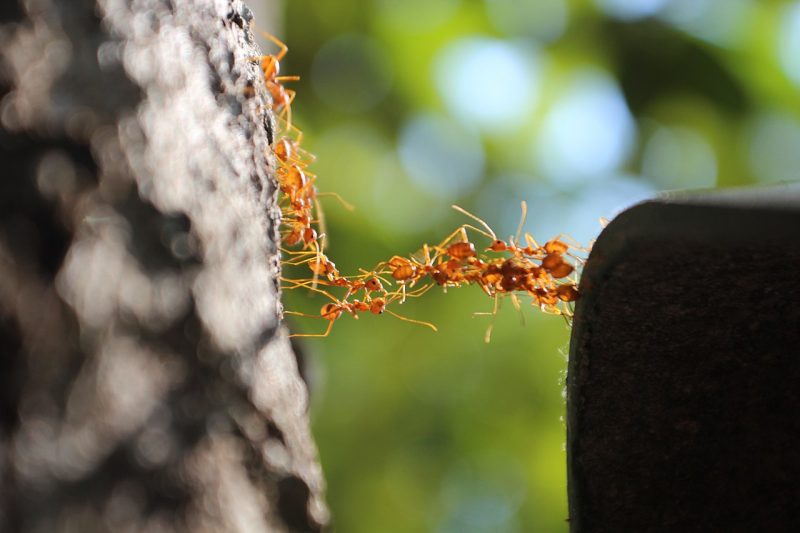
A single ant colony can contain hundreds of thousands of individual ants. Communities are headed by a queen or queens; some species can have as few as two or up to thousands of queens. Queens lay thousands of eggs to ensure the survival of the colony.
Worker ants, the most visible colony members, are females that never reproduce, but instead forage for food, care for the queen’s offspring, work on the nest, and protect the community.
Ants communicate and cooperate by secreting pheromones, or scent chemicals, released through their body to send messages to other ants. They send out warnings when danger’s near, leave trails of pheremones leading to food sources and even use them to attract a mate, like a love potion. How romantic!
They typically eat nectar, seeds, fungus or insects. However, some species have diets that are more unusual. Army ants, with their large mandibles and painful stings, may prey on reptiles, birds or even small mammals.
Ant colonies are so efficient that they can pass useful knowledge between generations. This kind of communal knowledge is essential for defense, so ants can easily differentiate friendly and hostile forces.
An amazing social system
Ants dispose of their dead. They even have undertakers to do this. When an ant dies inside the nest, they carry the body outside to prevent diseases and infections from spreading and affecting the rest of the colony. When an ant dies, its scent changes because the corpse releases something called oleic acid. Other ants detect this new chemical and carry the corpse.
Ants teach their young. As social insects, they have a very advanced system. This way, each group has a specialty, like foraging, cleaning or caretaking of eggs and baby ants.
What’s really interesting is that they’re not born with special skills. They do what we humans do; they learn from those around them. There are teachers that show them how to do a task, and if they are too slow or lack that talent, then they must do another job that doesn’t require special abilities.
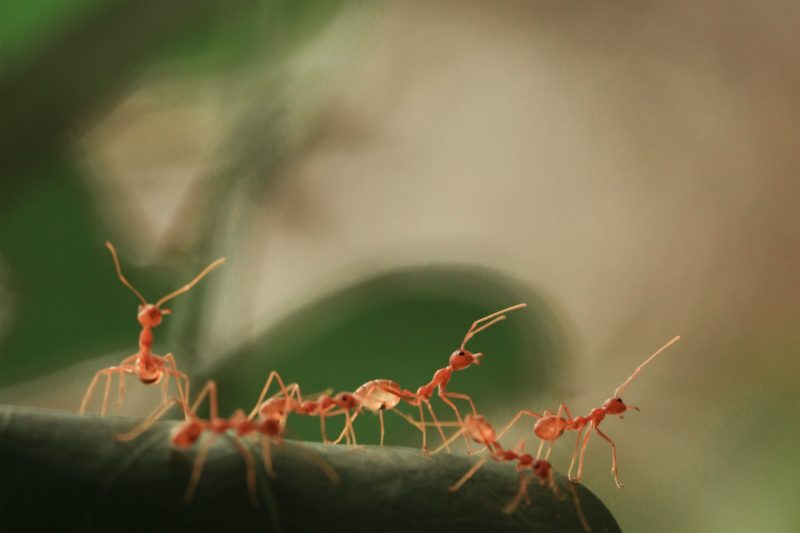
How an ant colony begins
Ants can harvest, herd and milk. They actually started farming before we did, 50 million years ago. Before moving out of her birth nest, a young queen must sneak inside the garden she used to live in to take away some seeds and fungal pellets to start her own garden and feed her brood.
So, she takes a blob of fungus in her mouth, taken from the established fungal garden she used to live in, and leaps in the air for a mating flight, gathering enough sperm to keep laying eggs for the rest of her life, which can be as long as 10 years. Then she lands, sheds her wings, finds a burrow in the ground, and starts a new colony.
She spits out her fungal blob, and it begins to grow. The queen lays her eggs in the fungus. The larvae feed on it, and once the first worker ants hatch, they help the queen to tend the garden.
Eco-friendly ants
Ants use herbicides and disinfectant in their fungal gardens. But their substances are far more eco-friendly than human-made ones. The fungal gardens they grow are also home to a virulent type of fungus that kills the fungal crops, preventing them from spreading.
Ants have bacteria at their disposal; they carry them on their cuticles (the hard outer layer they have instead of skin). These bacteria produce an antibiotic that suppresses the growth of the fungal weed. In their nests, they use several substances that inhibit the spread of parasites or weeds.
Leafcutter ants are industrious creatures known for expertly carving up foliage and then carrying it back in pieces to their colony. They use the leaves to farm fungus.
Several species of ants have a special symbiotic relationship with aphids. Aphids feed primarily on the sap from plants and secrete a liquid called honeydew. This secretion is very sugar-rich, and ants crave it. It’s a great food source.
As a result, a system has been hashed out by these insects wherein the ants herd the aphids around to the juiciest parts of plants, protect them from predators, and carry them into their nests at night and for winter. In return, they are allowed to “milk” the aphids, tapping the aphids with their antennae, coaxing them to secrete their honeydew, which is then lapped up by the ant. The little bugs are considered pests by every farmer on earth, except for their friendly six-legged keepers, the herder ants, which treat the bugs as their dairy cows.
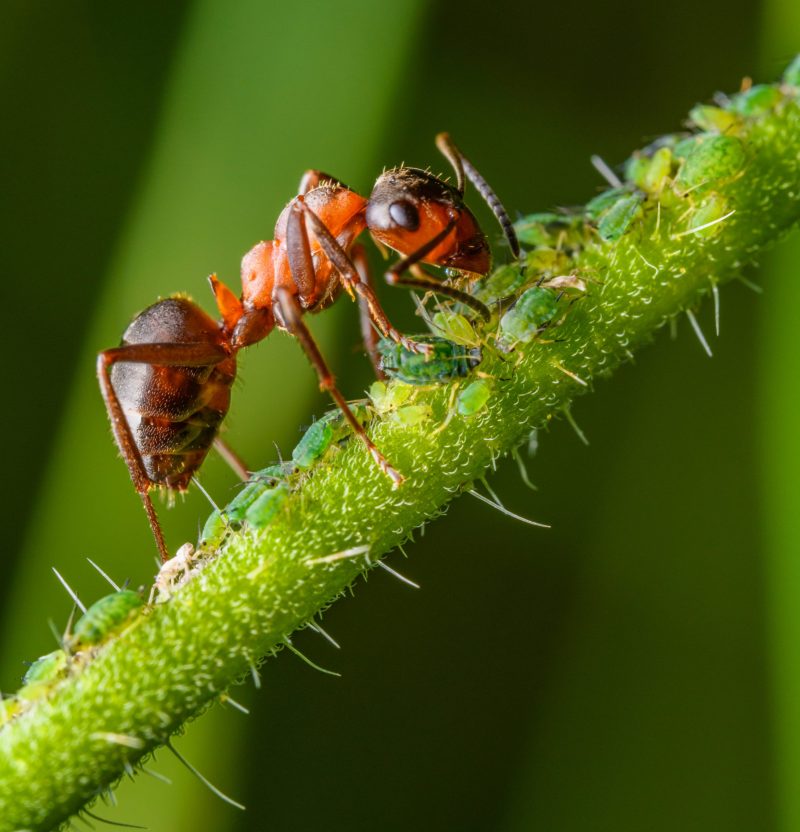
Underground cities
Ants build amazingly complex and stable structures. From the outside, you might only see a hole disappearing into the ground, but beneath the surface, there are many tunnels, branches and chambers that serve as home for the colony’s queen, as nurseries for the young, as farms for fungus cultivated for food, and as trash dumps. They are underground cities, some of them home to millions of individuals, reaching as far as 25 feet (8 meters) underground, often lasting for decades.
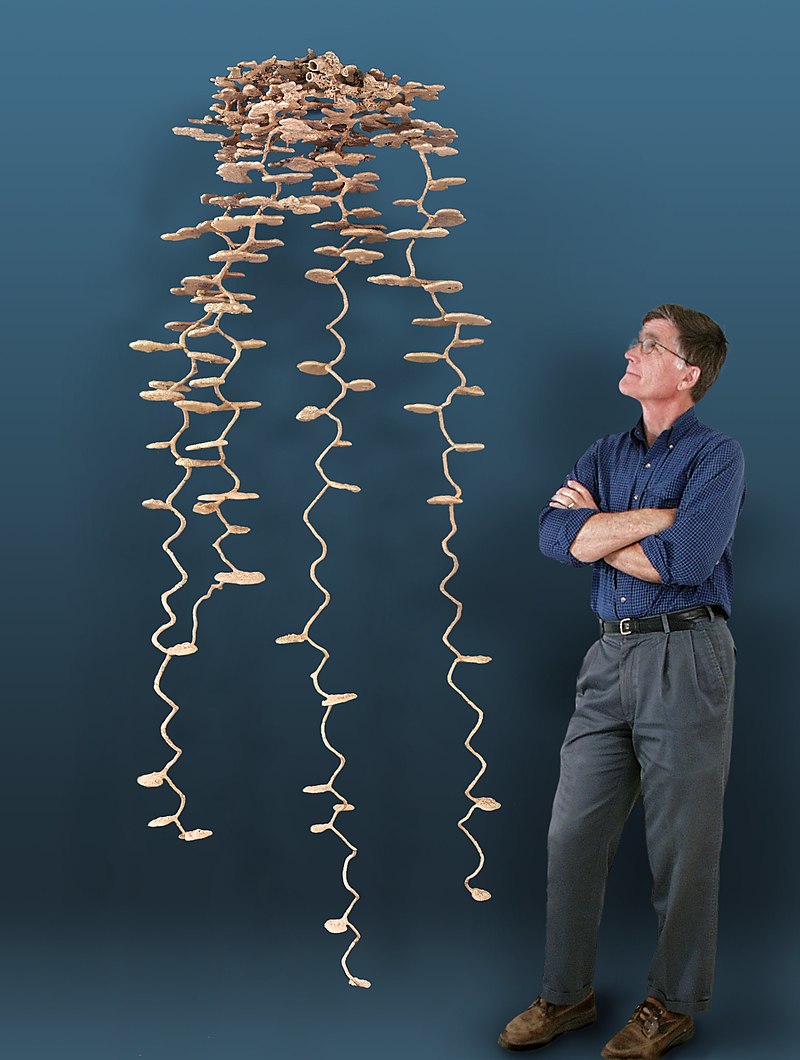
This kind of construction would be an impressive undertaking for most creatures, but when performed by animals that don’t get much bigger than your fingernail, it is especially remarkable.
Watch this amazing video of an excavation of an underground ant city.
Unusual ants
Within the many thousands of known ant species, there are many that are unique, resulting in the development of special physical characteristics and interesting behavior.
For example, ants have a variety of biological defenses. Fire ants might be little, but they bite and sting with a venom called solenopsin, which causes a burning sensation, hence the name “fire ant.” They can also survive floods by clumping together to float on the water’s surface.
Other species, like the Pheidole drogon, have evolved to grow spikes or spines from their exoskeletons.
One Amazon species, the Allomerus decemarticulatus, cooperatively builds extensive traps from plant fiber. When an insect steps on one of the trap’s many holes, hundreds of ants inside use the openings to seize it with their jaws.
The bullet ant is said to have the most painful sting in the world. Living in humid jungle areas such as the Amazon, their sting has been compared to being hit by a bullet.
Culture and history
Ants can be used to stitch up wounds. Minor wounds are normally just annoying, with advanced medicine a call away. But imagine you’re in the middle of nowhere and with no first-aid kit or hospital. Then you could use the army ants’ strong pincers. In Maasai tribes, they have the ant bite on both sides of the wound, break off its body and leave behind the head. It can mean the difference between life and death when no other resources are available.
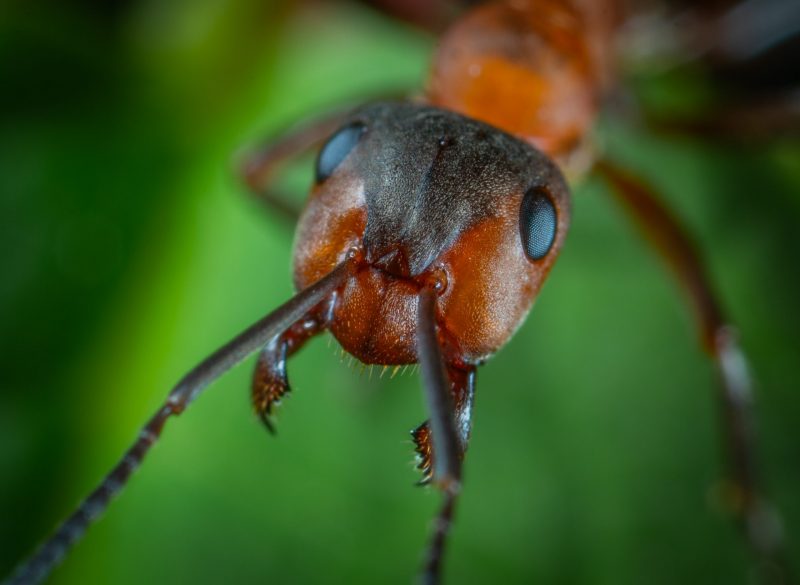
Thank you to the amazing photographers from Pexels, Unsplash and Wikipedia.
Bottom line: Ants are common insects with unique capabilities. They can be found almost anywhere in the world and can harvest, herd and milk. They can also build amazingly complex and stable underground cities.
Read more lifeform of the week articles
The post Ants, little but tough: Lifeform of the week first appeared on EarthSky.
from EarthSky https://ift.tt/s0lRPQh
Closeup of a red ant covered in pollen. Learn more about ants here. Image via Egor Kamelev/ Pexels.
Ants are common insects, but they have some unique capabilities. For example, they have legendary communication skills that allow their colonies to function as superorganisms.
We are newbies in the animal kingdom, but ants have been living since the Cretaceous, arising some 140 to 168 million years ago. Individually, ants are the longest-lived insects. Unlike some bugs that might only live for days or even hours, the queen ant of one particular species – the Pogonomyrmex Owyheei – can live up to 30 years.
There are 20 quadrillion ants on Earth. That’s 2.5 million ants for every human. Ants are members of the family Formicidae. There are more than 12,000 species, and some experts estimate 20,000 exist.
They can be found almost anywhere in the world, with the exception of Antarctica, Iceland, Greenland and some island nations.

Ants’ appearance
Ants range in size from minuscule up to 1 inch (3 cm) long. They are usually black, brown, red or yellow.
Ants don’t have ears, and some of them don’t have eyes! Ants “listen” by feeling vibrations from the ground through their feet, and eyeless ants such as the driver ant species can communicate by using their antennae.
Ants have elbowed antennae and narrow “waists” between the abdomen and thorax. Some ants have wings. Their front wings are longer than their hind wings. The presence of wings indicates an ant’s fertility. Ants with wings are either females that are fertile or males whose job it is to mate with them.

Members of the colony
In a colony, you can find females (workers or queens) and males. While females are diploid (hatched from fertilized eggs, hence possessing two sets of chromosomes, one from the mother and one from her male mate), males are haploid (hatched from unfertilized eggs, hence have just one set of chromosomes, from the mother). Thus, males do not have a father.
Queens are reproductive females that are fully winged in most species.
Workers are non-reproductive (sterile) females that are always wingless. They form the bulk of individuals within a colony.
Males are fully winged (mostly). They are generally present within a colony for only a short time each year and typically live a few weeks, dying very soon after mating.

Typical cycle for a worker ant
Egg: Laid in the ant colony and looked after by other workers.
Larva: Once it emerges from the egg, the larva then begins to develop.
Adult: It can take around 6-10 weeks for an ant to reach the adult stage.
For the queen in any colony, their lifespan may last up to around 15 years, while the worker ants live for roughly seven years. This is, of course, if they can avoid predators and other dangers. For a reproductive male – one of the flying ant types – the lifespan is much shorter at around two weeks. This is because when they’re done mating, they die.
Most of the ants a person sees are female. Male ants, also called “drones,’ do not perform any work in the colony. Their only job is to fertilize the queen ant so she can lay eggs and support the population in the nest.
What are their characteristics?
The ant is one of the world’s strongest creatures in relation to its size. A single ant can carry 50 times its own body weight, and they’ll even work together to move bigger objects as a group!

Ants hold the record for the fastest movement in the animal kingdom. A species of trap jaw ant can close its jaws at 140 mph (125 kph), which it uses to kill its prey or injure predators.
The largest ant nest ever found was more than 3,700 miles (6,000 km) wide. Found in Argentina in 2000, the enormous colony housed 33 ant populations that had merged into one giant supercolony, with millions of nests and billions of workers.
Ants’ behavior and diet
As social insects, ants live in structured nest communities that may be located underground, in ground-level mounds or in trees.

A single ant colony can contain hundreds of thousands of individual ants. Communities are headed by a queen or queens; some species can have as few as two or up to thousands of queens. Queens lay thousands of eggs to ensure the survival of the colony.
Worker ants, the most visible colony members, are females that never reproduce, but instead forage for food, care for the queen’s offspring, work on the nest, and protect the community.
Ants communicate and cooperate by secreting pheromones, or scent chemicals, released through their body to send messages to other ants. They send out warnings when danger’s near, leave trails of pheremones leading to food sources and even use them to attract a mate, like a love potion. How romantic!
They typically eat nectar, seeds, fungus or insects. However, some species have diets that are more unusual. Army ants, with their large mandibles and painful stings, may prey on reptiles, birds or even small mammals.
Ant colonies are so efficient that they can pass useful knowledge between generations. This kind of communal knowledge is essential for defense, so ants can easily differentiate friendly and hostile forces.
An amazing social system
Ants dispose of their dead. They even have undertakers to do this. When an ant dies inside the nest, they carry the body outside to prevent diseases and infections from spreading and affecting the rest of the colony. When an ant dies, its scent changes because the corpse releases something called oleic acid. Other ants detect this new chemical and carry the corpse.
Ants teach their young. As social insects, they have a very advanced system. This way, each group has a specialty, like foraging, cleaning or caretaking of eggs and baby ants.
What’s really interesting is that they’re not born with special skills. They do what we humans do; they learn from those around them. There are teachers that show them how to do a task, and if they are too slow or lack that talent, then they must do another job that doesn’t require special abilities.

How an ant colony begins
Ants can harvest, herd and milk. They actually started farming before we did, 50 million years ago. Before moving out of her birth nest, a young queen must sneak inside the garden she used to live in to take away some seeds and fungal pellets to start her own garden and feed her brood.
So, she takes a blob of fungus in her mouth, taken from the established fungal garden she used to live in, and leaps in the air for a mating flight, gathering enough sperm to keep laying eggs for the rest of her life, which can be as long as 10 years. Then she lands, sheds her wings, finds a burrow in the ground, and starts a new colony.
She spits out her fungal blob, and it begins to grow. The queen lays her eggs in the fungus. The larvae feed on it, and once the first worker ants hatch, they help the queen to tend the garden.
Eco-friendly ants
Ants use herbicides and disinfectant in their fungal gardens. But their substances are far more eco-friendly than human-made ones. The fungal gardens they grow are also home to a virulent type of fungus that kills the fungal crops, preventing them from spreading.
Ants have bacteria at their disposal; they carry them on their cuticles (the hard outer layer they have instead of skin). These bacteria produce an antibiotic that suppresses the growth of the fungal weed. In their nests, they use several substances that inhibit the spread of parasites or weeds.
Leafcutter ants are industrious creatures known for expertly carving up foliage and then carrying it back in pieces to their colony. They use the leaves to farm fungus.
Several species of ants have a special symbiotic relationship with aphids. Aphids feed primarily on the sap from plants and secrete a liquid called honeydew. This secretion is very sugar-rich, and ants crave it. It’s a great food source.
As a result, a system has been hashed out by these insects wherein the ants herd the aphids around to the juiciest parts of plants, protect them from predators, and carry them into their nests at night and for winter. In return, they are allowed to “milk” the aphids, tapping the aphids with their antennae, coaxing them to secrete their honeydew, which is then lapped up by the ant. The little bugs are considered pests by every farmer on earth, except for their friendly six-legged keepers, the herder ants, which treat the bugs as their dairy cows.

Underground cities
Ants build amazingly complex and stable structures. From the outside, you might only see a hole disappearing into the ground, but beneath the surface, there are many tunnels, branches and chambers that serve as home for the colony’s queen, as nurseries for the young, as farms for fungus cultivated for food, and as trash dumps. They are underground cities, some of them home to millions of individuals, reaching as far as 25 feet (8 meters) underground, often lasting for decades.

This kind of construction would be an impressive undertaking for most creatures, but when performed by animals that don’t get much bigger than your fingernail, it is especially remarkable.
Watch this amazing video of an excavation of an underground ant city.
Unusual ants
Within the many thousands of known ant species, there are many that are unique, resulting in the development of special physical characteristics and interesting behavior.
For example, ants have a variety of biological defenses. Fire ants might be little, but they bite and sting with a venom called solenopsin, which causes a burning sensation, hence the name “fire ant.” They can also survive floods by clumping together to float on the water’s surface.
Other species, like the Pheidole drogon, have evolved to grow spikes or spines from their exoskeletons.
One Amazon species, the Allomerus decemarticulatus, cooperatively builds extensive traps from plant fiber. When an insect steps on one of the trap’s many holes, hundreds of ants inside use the openings to seize it with their jaws.
The bullet ant is said to have the most painful sting in the world. Living in humid jungle areas such as the Amazon, their sting has been compared to being hit by a bullet.
Culture and history
Ants can be used to stitch up wounds. Minor wounds are normally just annoying, with advanced medicine a call away. But imagine you’re in the middle of nowhere and with no first-aid kit or hospital. Then you could use the army ants’ strong pincers. In Maasai tribes, they have the ant bite on both sides of the wound, break off its body and leave behind the head. It can mean the difference between life and death when no other resources are available.

Thank you to the amazing photographers from Pexels, Unsplash and Wikipedia.
Bottom line: Ants are common insects with unique capabilities. They can be found almost anywhere in the world and can harvest, herd and milk. They can also build amazingly complex and stable underground cities.
Read more lifeform of the week articles
The post Ants, little but tough: Lifeform of the week first appeared on EarthSky.
from EarthSky https://ift.tt/s0lRPQh

Aucun commentaire:
Enregistrer un commentaire